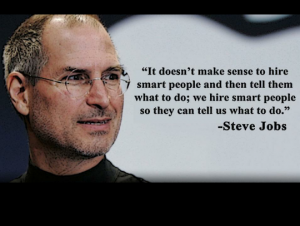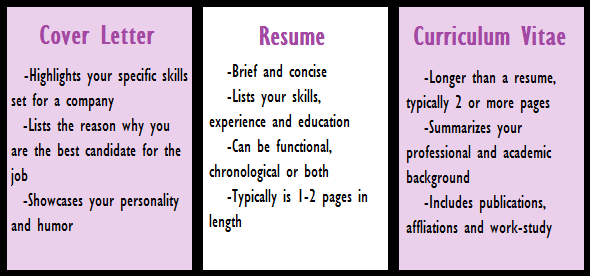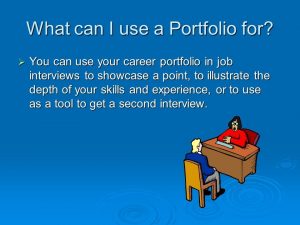Most of people get confused between resume and curriculum vitae (CV); we also hear words such as portfolio and bio-data. All four terms describe presentation of particulars of an individual.
A resume is a synopsis of the most relevant professional experiences you have for the particular job for which you are applying. It is snapshot and hence not more than one or two pages in length. Resume word is originated from the French word “res umer” which means a summary of an individual’s educational background, relevant work experience, history and achievements. A resume is mainly used when seeking a new job and is sent to the employer in order to introduce an individual, depending on the detailing he/she gets a chance to meet the recruiter or the employer. A resume is ideally sent when applying for middle and senior level positions, when experience and related skills are more important than educational details.
umer” which means a summary of an individual’s educational background, relevant work experience, history and achievements. A resume is mainly used when seeking a new job and is sent to the employer in order to introduce an individual, depending on the detailing he/she gets a chance to meet the recruiter or the employer. A resume is ideally sent when applying for middle and senior level positions, when experience and related skills are more important than educational details.
A curriculum vitae, normally called a CV or curricula vitae, is derived from a Latin word which means “course of life.” A CV contains a detailed narrative of an individual’s work experience in details listing the achievements, educational background, skill set, languages known, awards won etc. A CV is a more elaborate description than a resume. CVs are accepted internationally and are used to apply for executive, academic, managerial, medical and many other senior posts jobs. In my opinion, a CV is a marketing tool which can be used by an individual to endorse himself.
The primary differences between a resume and a curriculum vitae are length, while both are used in job applications. A resume is brief summary and a CV is a detailed document.
Portfolio originates from the Italian word “portafoglio” meaning to carry and ‘foglio’ meaning leaf or paper. Portfolio is an album of work samples shown to prospective employers, usually in creative fields such as photography, art and graphic design. It so happens that work pieces comprised of art and design cannot be explained theoretically. As a result, presenting pictures, designs and samples is the best way to tell a recruiter about your work. Hence, unlike a resume or a CV, a portfolio may contain pictures, documents, and onsite media details, screen shots of a website, and notes or letters of praise from distinguished clients.
Portfolio is a typically a large, thin, flat case for loose sheets of paper such as drawings or maps; it is a variety set of photographs of a model or actor intended to be shown to a potential employer; it can also be a range of investments held by a person or organization; it describes a range of products or services offered by an organization which called ‘product portfolio’ in marketing; it also describes the position and duties of a Minister or Secretary of State. Painters, graphic artists, journalists, advertisers, authors, poets and other creative types of work profiles can use career portfolios successfully while job-hunting,
Let us try understanding the term of portfolio with the help of an example. Let’s say there are two candidate shortlisted for a post, who possess the same strengths and experience for a job profile. Candidate number 1 sends his resume to the employer, theoretically stating his skills, achievements, past experiences, and a list of renowned people for references who praise his work. Meanwhile, candidate number 2 sends pictures and samples of his new art work along with letters of appreciation from clients and a collection of tweets admiring his work. Who do you think will get the job? Obviously candidate number 2, because in his case, the recruiter can see the exact work, along with certificates of people who have accepted his work in the market.
The term bio-data, which is rarely used these days, stands for biographical data, is commonly used in the medical field. A bio-data, is usually was used only in hospitals on a prescription pad hung on a patient’s bed side. It mentions the patient’s name, age, sex, weight, disease, medicines given pulse rate, blood pressure, diet given and other relevant details. This form is now used in a few countries, particularly in government institutions, or when applying for grants. Emphasizing an individual’s particulars such as date of birth, religion, sex, race, nationality, address, and marital status. This form is different from a resume and a CV, which focuses more on an individual’s qualifications. Typically in a bio-data factors such as educational qualifications and past job experience take a back seat.
Rarely do we see resumes and CVs tailored to fit a job. Sure, many of the background and academic details tend to remain the same but in a good CV/resumes the tone and accent changes. Rarely people pay attention to what they write in their resume. While you remain the same person, but your description, narrative changes with a new perspective depending on the job you are applying for. It is therefore advisable to constantly re-examine and refine your resume and CV because it speaks volumes about you in absentia. Remember your presentation skill and technique for language matter a lot. Your resume or CV should express your natural self-confidence; keep refining what you say and how you say it in the most concise way. Your CV especially evolves your perceptions on different dimensions in a practical manner. Keep your resume handy with you. Because it is a running list of everything you have accomplished so far. And, you never know a bright opportunity might come your way any time. Keep your CV short and sweet. Put only what is relevant. You don’t need to include everything. Remember, you are advertising yourself for a job, not giving them your life story.
A well written cover letter is essential to be sent with your CV/resume/portfolio or bio-data. Your cover letter should be used to expand on your past achievements, and explain why you think you are the ideal candidate for the role. Use the covering letter to clearly outline your objectives, underlining particular projects or interests that you think will make you stand out. Get straight to the point, employers appreciate an honest approach and keep your document current and up-to-date.














































